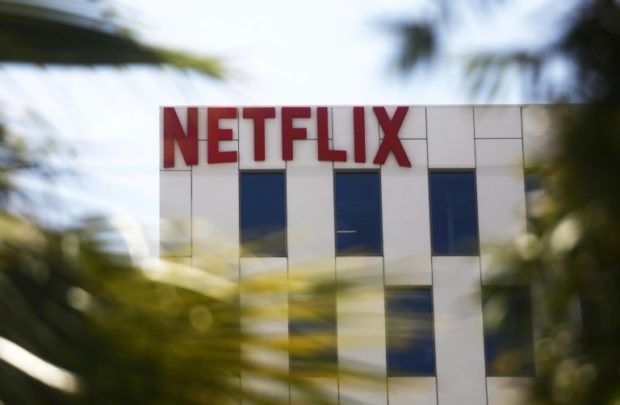
Thanks to rapid global expansion, Netflix is now ramping up production in countries that are easing restrictions. Image: AFP/Getty Images North America/Mario Tama
While coronavirus has brought Hollywood to a halt, Netflix has enjoyed record success.
But will the streaming giant’s well-stocked slate of future shows be enough to maintain that growth?
Netflix announced this week that it has finished filming the majority of movies and series due for release this year, playing down concerns that its flow of hit shows such as “Tiger King” could run dry, or the next “Unorthodox” be delayed.
“Our 2020 slate of series and films are largely shot, and are in post-production remotely in locations all over the world,” said content chief Ted Sarandos. “And we’re actually pretty deep into our 2021 slate. So we’re not anticipating moving things around.”
Analysts say Netflix’s scale, in terms of its sheer number of ongoing productions and global presence, make it best-placed to weather the pandemic storm.
“Any other studio… might have four or five films in the can, or in post-production that they can still work on. But Netflix has possibly hundreds,” said Jeff Bock, senior analyst at Exhibitor Relations.
“There are so many productions that are financed by Netflix, it’s almost mind-boggling. They’re almost putting out as much content as all the studios put together.”
The deep-pocketed platform can also turn to its vast network of overseas partners to license content — often subtitled — for domestic audiences.
‘Hurt’
But even Netflix’s content pipeline has inevitable limits if an unprecedented shutdown nobody could have predicted extends much longer.
“They like to put out a lot of content, each and every week,” said Bock. “Maybe as we go along into the fourth or fifth month in terms of lockdowns… they certainly will be ahead of the game, but they’ll certainly be hurt.”
New, original programming plays a bigger part in Netflix’s appeal than rival platforms like Disney+ — home to the Mouse House’s enviable 80-year back catalog.
“People are, in a sense, distracted by all the archival content — they can watch shows over and over,” said Paul Dergarabedian, senior Comscore analyst. “There’s a lot of buffer there.”
With the streaming wars heating up, Netflix has lost evergreen hits like “Friends” and “The Office” to upcoming rivals HBO Max and Peacock.
The delay of this summer’s entire movie theater blockbuster slate also means those films will arrive later at streamers such as Netflix, according to Steve Nason, research director at Parks Associates.
“Maybe not in the short term, but in the longer term, that hurts Netflix,” he said.
‘Better shape’
But Netflix has another tool at its disposal: its ability to find ways to keep making new content.
Thanks to rapid global expansion, Netflix is now ramping up production in countries that are easing restrictions — namely Iceland and South Korea — while Hollywood remains closed.
“Certainly the Netflix brand is worldwide — there’s no reason why they can’t buy their own island honestly and shoot things there,” Bock told Agence France-Presse.
Its recent successes in reality TV, such as “Love is Blind” and “Too Hot to Handle”, point to avenues requiring smaller crews and with rapid turnaround times.
Netflix quickly capitalized on the phenomenal success of surreal zookeeper documentary “Tiger King” with a follow-up episode featuring interviews with show alumni conducted via low-budget video calls.
“A lot of different content distributors are looking into (documentary programming) in the short term, to fill some of those holes,” said Nason. “Netflix has already done that.”
“If the production halt goes on nine to 12 months, everyone is going to be hurt,” he added. “But compared to some of their competitors… (Netflix) are going to be in much better shape.” RGA
RELATED STORIES:
Netflix to adjust video quality as COVID-19 quarantine kicks up internet usage
Disney launches reduced-bandwidth streaming in 7 European countries

